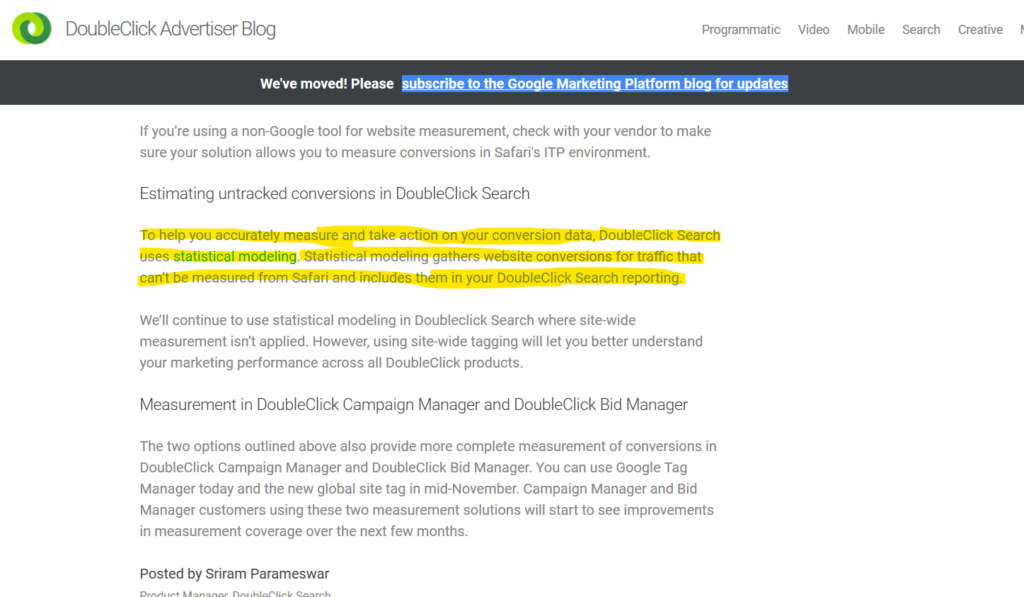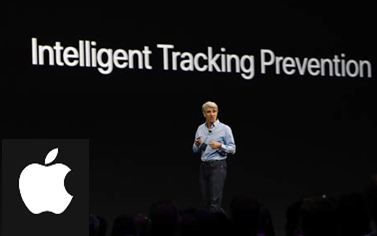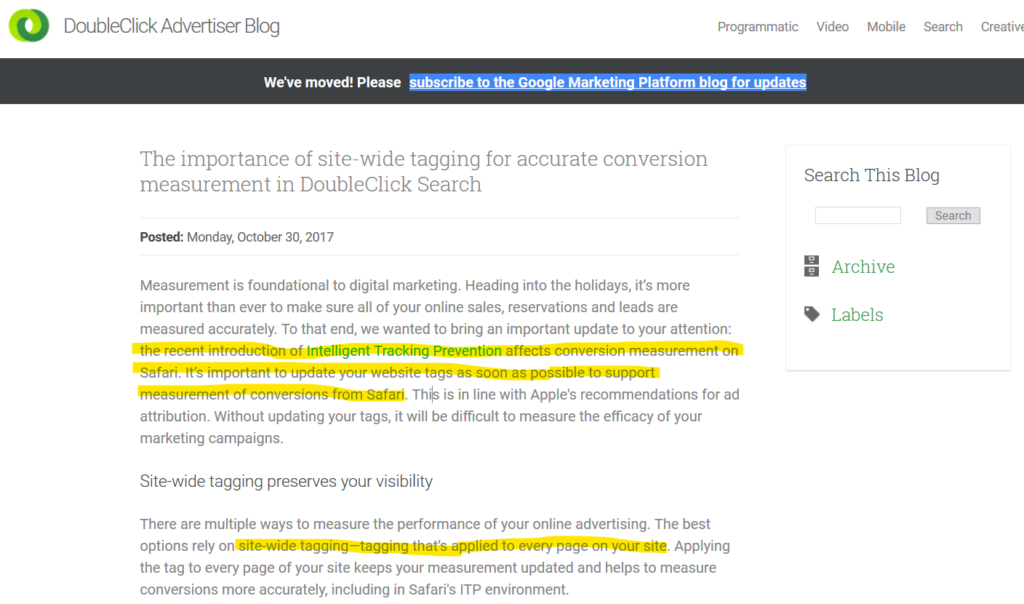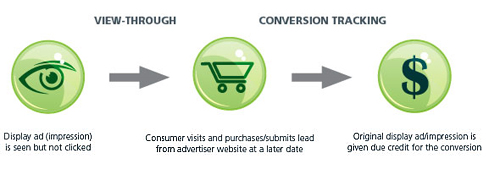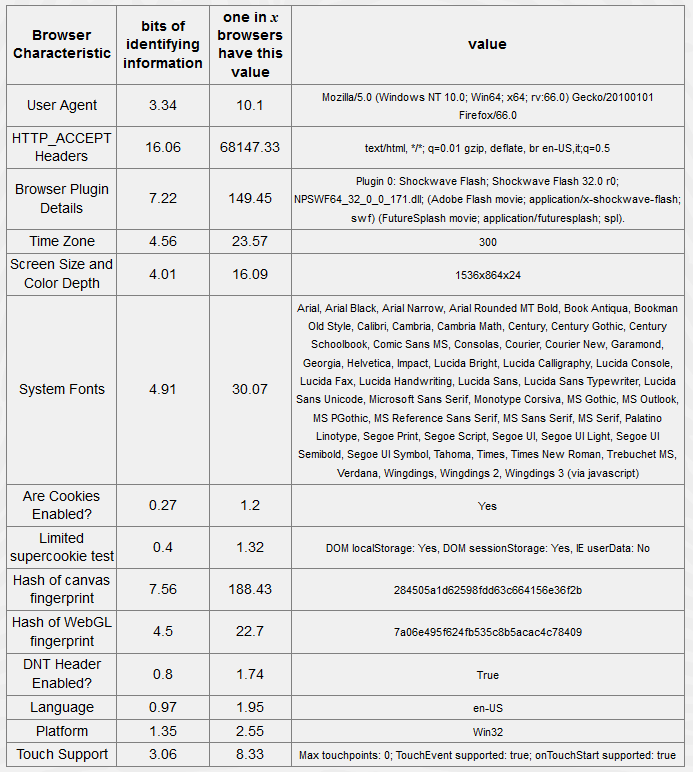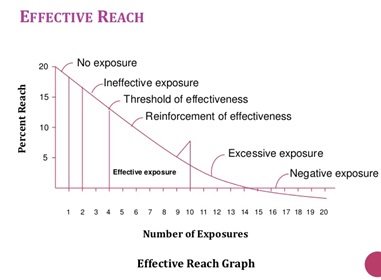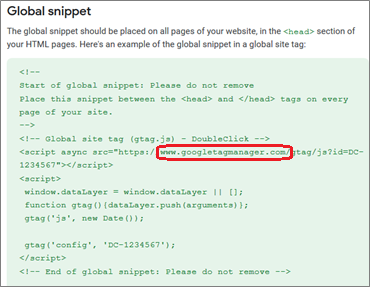UPDATED 2/11/19
And the beat goes on…
The UK-based Guardian’s John Naughton joins a growing line of sanctimonious journalists carping about digital advertising tracking in, “The goal is to automate us’: welcome to the age of surveillance capitalism.” The article rehashes Shoshanna Zuboff’s tropey new book Surveillance Capitalism once again just as Motherboard did a couple of months back (mentioned earlier in this post). For an ex-Harvard Business School professor, the book sounds like a post-modern Das Kapital.
With at least 54 trackers at the time of this blog post Guardian joins many other digital ad tracking hipocrites. John Naughton is not likely working for free and Guardian is generating plenty of ad revenue as a result. One can see clearly see the banner ad at the top of the page and in case you don’t read the article there are another 11 ad positions on the page! Last, Guardian harangues site visitors begging for donations with a zeal comparable to the NPR and PBS fund drives. The strategy must be working as digital revenue is up at Guardian Media Group.
 Trackers revealed per Ghostery plug-in
Trackers revealed per Ghostery plug-in
Similar to Motherboard, it should be no surprise that although Facebook and Google are thoroughly trashed by the author, there are in fact, multiple trackers from each on the article Web page. Apparently it is OK for Guardian and Naughton to make a buck from digital ad targeting but Facebook and Google should not?
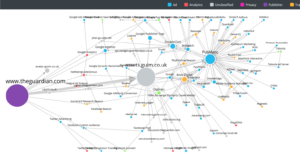
Guardian.com Diagram shows Rampant Trackers
A quick look at the tracker diagram for that article shows the hipocrisy of Guardian, who is really filling up at the ad tracking trough. As you can see John Naughton’s publishers are certainly not working for free. How long would John and the Guardian last if they took up Shoshanna Hoffman’s advice and swore-off digital advertising money?
Last, it is interesting that Guardian is hawking Shoshanna Zuboff’s book itself with a link at the bottom at the end of the page. The holier than thou Guardian doesn’t mention any interest in this book which makes the article itself smell alot like undisclosed advertorial.
Message to komrades John and Shoshanna, so-called surveillance capitalism isn’t the biggest problem. As with the other digital tracking Pharisees, government surveillance is minimized to just two sentences. For people pining about democracy, there is no mention of multiple government agencies already feasting on backdoor access and optimized APIs to more easily glom data on users. The kind of industry-government coziness that enables massive spying on the citizenry would have made King George III squeal with delight. Paul Revere, George Washington and Thomas Jefferson would never have had a chance.
Free is Not Without Cost
While, I’m no fan of Big G[oogle] and Baby G[Facebook] advertising practices they do provide useful services to consumers for free that nobody is being forced to use. It is puzzling that some users (Saying No to Free-riders) expect to enjoy the benefits of these services without paying for them or providing information about themselves in exchange.
More worrisome should be the perversion of the free market (a/k/a crony capitalism) that is happening when regulations are foisted upon an industry. Red-tape raises cost of entry and helps incumbents entrench themselves creating monopolies, duopolies, etc… Basic economics explains that reducing the number of suppliers (shifting supply curve S to S1 to the left) while holding demand constant increases prices.

Not a big surprise but disappointing then that some of the biggest players are welcoming the rent-seeking opportunity to be regulated. Railroads, pharma, insurance and banking come to mind as high-margin and high-regulation industries.
Of course bureaucrats and politicians gain but that is a feature not a bug.
UPDATED 1/23/19
Natasha Lomas is the latest writer/journalist that sure likes to get a paycheck but bemoans advertising tracking and the ad tech players that make it all happen. Just another in a string of digital tracking hypocrites in the rather verbose and rambling, The case against behavioral advertising is stacking up over at TechCrunch.
Lomas’ actual premise is an inch deep, e.g. the Digiday reference about the
NY Times International says that they are “still doing private marketplace deals.” Clearly, missing the fact that PMPs use the same programmatic techniques just different ad buying methods: guaranteed placement directly from NY Times assisted by ad sales reps vs. open exchanges buying remnant ad inventory in real-time. Sorry, the facts got in the way of the story!
Here are more facts: Lomas and her editors might be interested learn that Ghostery counts a whopping 86 trackers on the article itself; the tracking network diagram found even more.
The case against poor quality business writing is really stacking up too!
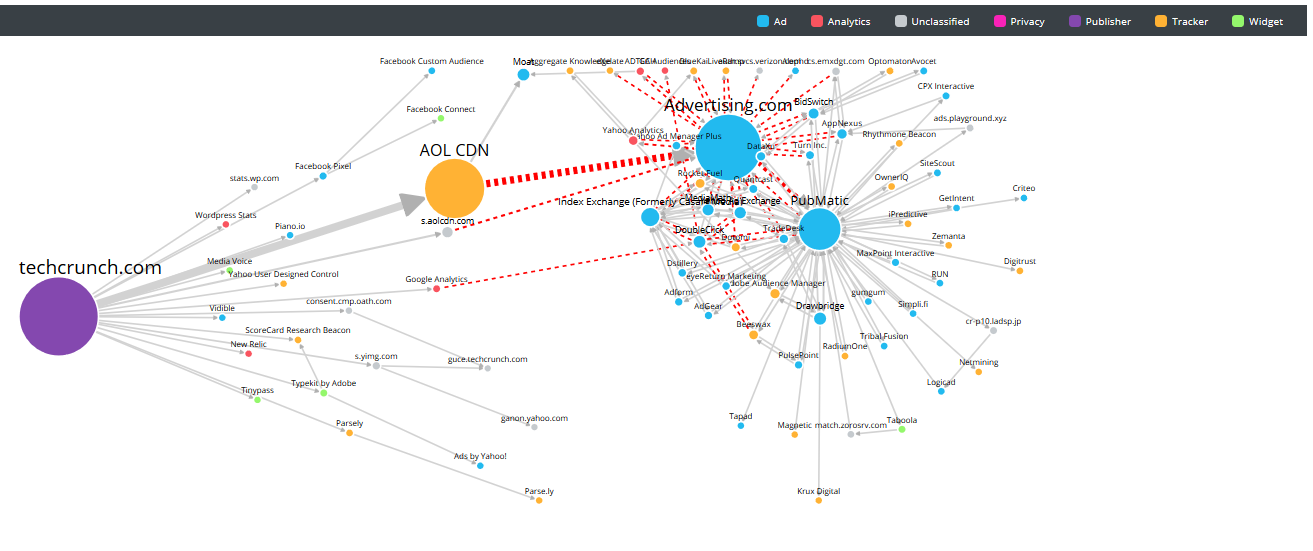
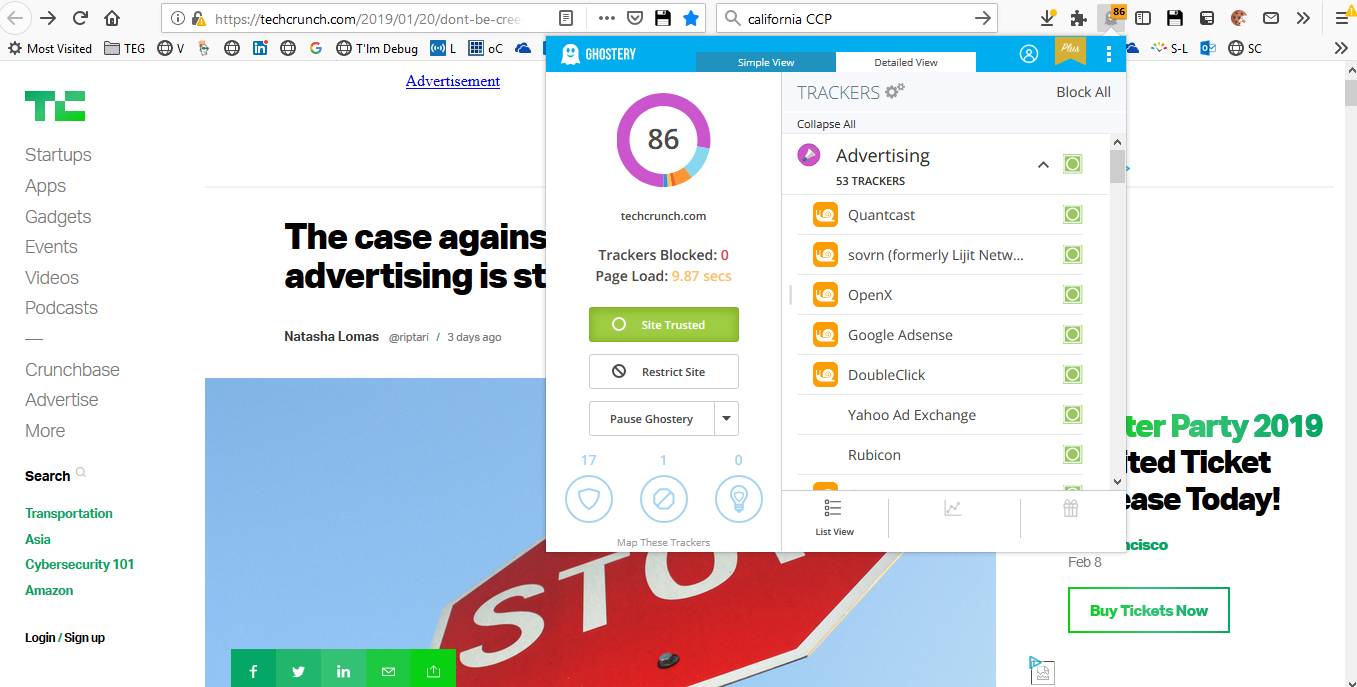
UPDATED 12/4/18
Not to be outdone, comes the steaming hot chicken-little indigence of Motherboard Vice with, Targeted Advertising Is Ruining the Internet and Breaking the World with a whopping 62 trackers, almost 3 times the capitalists-of-convenience at CBS.
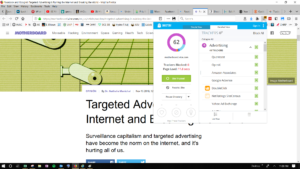
Here is their tracker map diagram, which is pretty impressive in the level complexity and likely degraded user experience. It shows how dependent on digital tracking Motherboard Vice is for ad targeting and measurement.
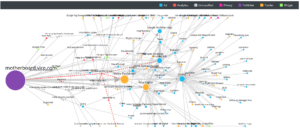
While reading the article and waiting for the call for Workers of the World to Unite rally-cry, I struggled to find a link to the privacy policy on the forever expanding page. An interesting technique that served endless content and more display ad banners as you scroll down.
Eventually, I found Motherboard Vice’s privacy policy explained here – pretty long and complicated as per usual. I did find a link to an article on FAZ.net promoting retired HBS academic Shoshanna Zuboff’s new book about so-called “surveillance capitalism“…which…wait for it…ironically sported 24 trackers of it’s own!

Meanwhile no mention of the NSA, CIA, DOD and FBI surveillance by CBS or Motherboard Vice. Maybe Shoshanna Zuboff’s next book will be: Surveillance Government – The Fight for a Human Future at the New Frontier of Power.
You can’t make this up. In many ways, Web media publishers with ad-supported business models brought this on themselves – see Saying No to Free-riders. None of the above Web sites are using the open source Matomo analytics or Pwiwk Pro tag management product which is big in the EU.
UPDATED 12/4/18
John Stossel recently did a story on “The Creepy Line” a movie that rails against tracking and specifically Big G and Baby G.
A quick look with Ghostery shows the Web site uses both! Google Analytics and Doubleclick tracking was observed. Facebook Advertising and Connect are being used to facilitate social media promotion of the movie – ironic, no? Not to mention links to Amazon.com to see the movie. Disclaimer this blog is a Google-free zone but we’re making an exception here.
Coincidentally, it appears that Peter Schweizer is one of CBS’ producers in NYC…interesting! No mention of government tracking or spying.
Meanwhile, the tracker network diagram reveals even more clandestine tracking (130 total ) than Ghostery; this is likely due to server-side piggybacking.
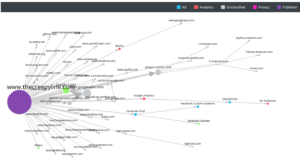
ORIGINAL POST: 11/19/18
Last week, CBS 60 Minutes broadcast “Your Data” aiming to scare everyone about online ad targeting. The outrage of the story was palpable. How dare Google (Big G) and Facebook (Baby G) track people and target ads to us?
In an irony too good to pass up, a quick look at CBSNews.com’s 60 Minutes Web site showed some 23 different trackers doing the exact same thing!
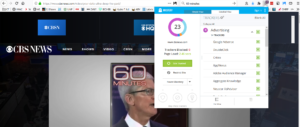
In the mislabeled but scary “Your Data” episode last week, the hapless Steve has little clue about which he speaks fawning over GDPR the whole time. BTW, how can it be “Your Data” when people voluntarily access somebody else’s Web server for all you can eat news, social media fun and search engine content? Magic bunnies don’t build these Web sites for free.
Alas, CBSNews.com’s Privacy Policy looks just like everybody else’s. Perhaps TV media is threatened. Or perhaps morally superior for forcing people to trade their time instead of their Web browsing behavior in exchange for free all-you-can-eat media.
So many ironies so little time…here you can see the CBSNews.com actually filling up themselves at Big G and baby G’s data trough. Traditional media trying to claw back advertising revenue they lost or journalism at work…hmmm.
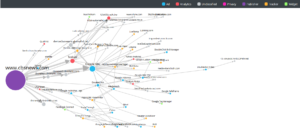
If you find any more good ones please reach out to me via LinkedIN.


